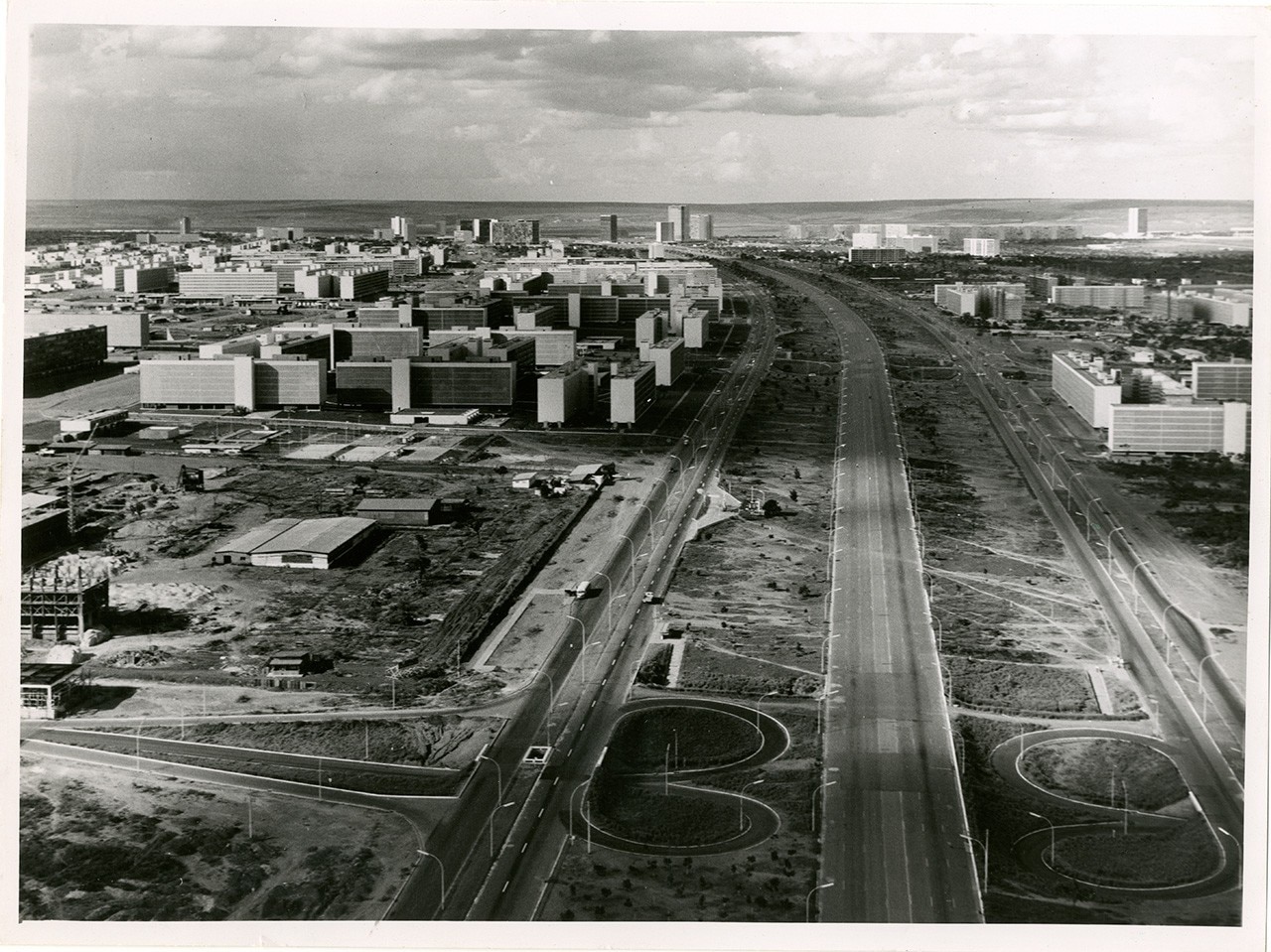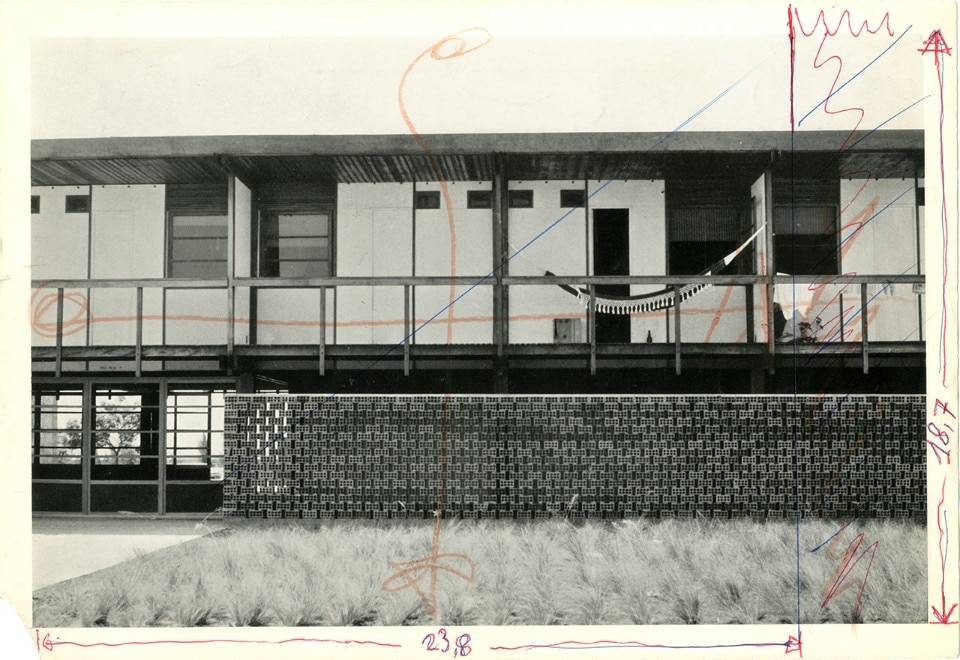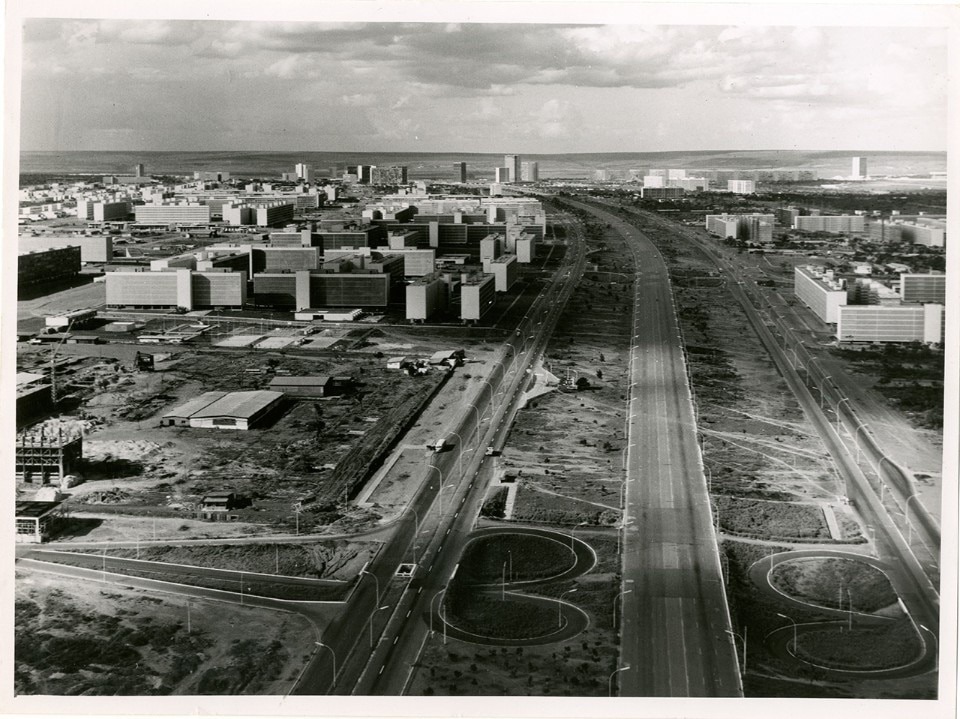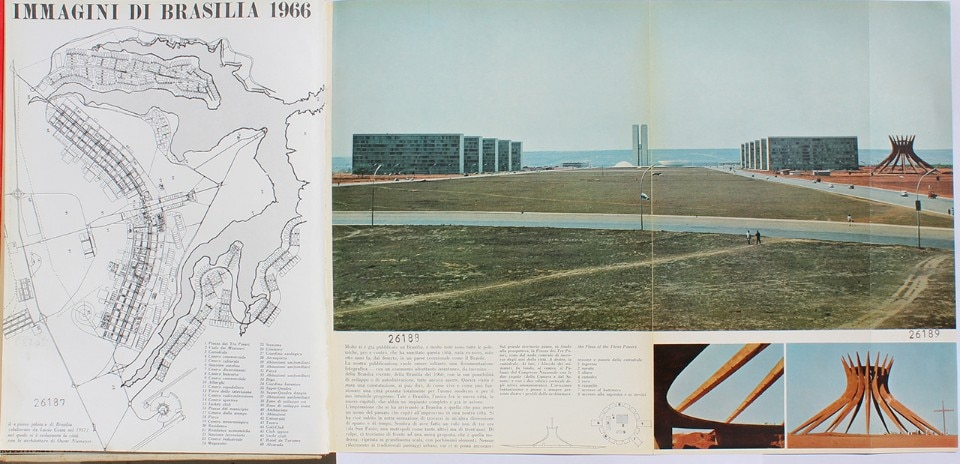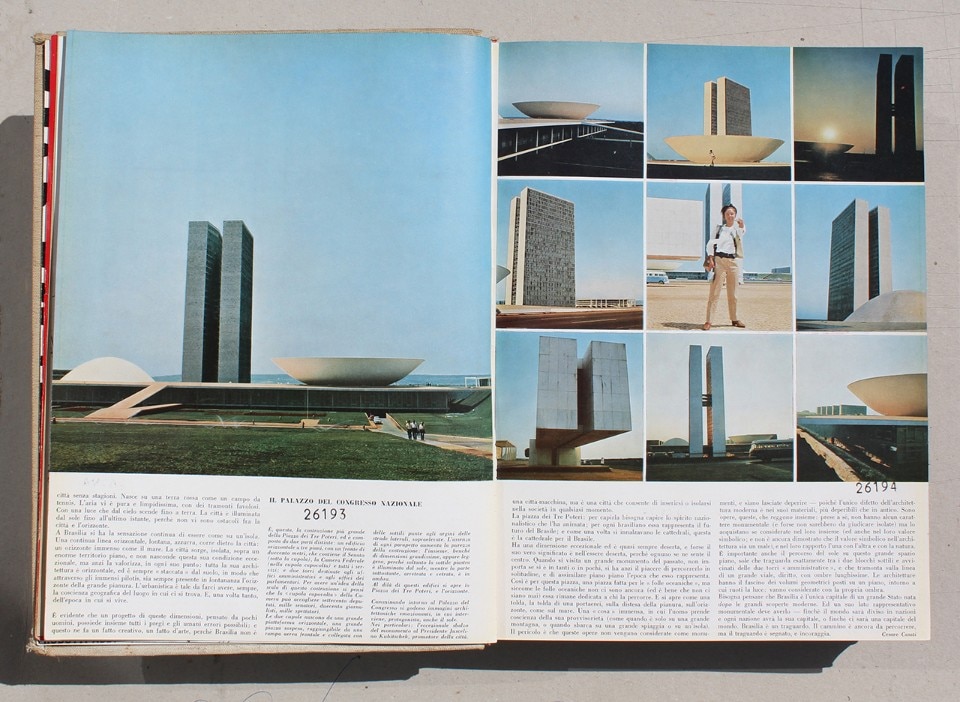This article was originally published on Domus 1049, september 2020.
“The impression upon arrival at Brasilia might be analogous to what someone from the past might experience...”, wrote Cesare Casati in an extensive report- age in Domus (434, 1966): 24 pages of his own photographs illustrating a travel journal on the new Brazilian capital, six years after it was built.
“In Brasilia – he wrote – you constantly feel as if you were living on an island. The horizon is continuous, far away, blue, visible from everywhere in the city: the horizon is wide as the sea. The city rises isolated from this enormous plain and nothing masks its exceptional state, but on the contrary, it is brought out in every feature. All the architecture is horizontal and it is always raised above the ground so that through the great ranges of the pilotis the horizon is always present in the distance, at the edge of the plain. The plan is such that you are always conscious of the geographical location. And for once, also, of the time in which you live.”
His was a positive comment albeit, at the end, overshadowed by a troubling doubt on its potential for development, or self-destruction. To understand the message implicit in this evasive comment, we must reconstruct the context in Italy (and Europe) in which this extraordinary event was received: a capital city built in the desert in just three years (the time between the competition announcement in the autumn of 1956 and its inauguration on 21 April 1960) in pursuit of a modernity that may well have reaffirmed the dynamism of the grand principles of early Modernism but incorporated them in unprecedented forms that were sensitive to the climate, the local area and the optimistic aesthetic of the “second machine age”.
In Brasilia urban planning pioneered a vision that was both elementary and complex: based on the axiom of two intersecting axes (almost like a cardo and decumanus traced on the red ground of the desert), Lúcio Costa’s Plano Piloto availed of the sensual plasticism of Oscar Niemeyer, who conducted an experiment in monumentality that could not but conjure up the coeval examples of Chandigarh and Dhaka. The rediscovery of urbanity in the post-war era had undermined the myth of the dominance of city planning and relaunched the topic of the “monument” as the heart of the city and expression of formal val- ues in which to depict a rejection of the authoritarianism of dictatorships and the notion of people as an open community.
But, just as Kahn’s architecture was given a wary reception in Italy (and in some cases was met with open rejection), Niemeyer’s failed to escape accu- sations of formalism – ultimately a paradoxical accusation for a country that, by embracing the “Neoliberty” style, had earned itself a reprimand from Reyner Banham for “the Italian Retreat from Modern Architecture”.
While Rogers escaped to the eloquent silence of Casabella, Bruno Zevi ir- revocably condemned it in L’Architettura. Cronache e storia (104, June 1964): “The facts have surpassed our fears... the city of bureaucrats, artificially attired with Niemeyer’s structuralist decoration, has turned into a prison barricaded by the virgin forest [...] A tragic occurrence that should be pondered by urban planners the world over.”
Brasilia today (and today’s Brazil) is unfortunately not that of Juscelino Ku- bitschek de Oliveira and the inadequacy of its ruling class did not need the tragedy of the Covid-19 pandemic to show that urbanity cannot exist without the support of proper social development policies. It is no surprise that the disrepute associated with the term “urban planning” today is the result of both a reduction of the general vision to abstract technology and an invasion of the rationale of globalised real estate, by which the city is the visual “logo” of pure advertising.
Sixty years after it was founded, Brasilia can be re-examined from a new observation post: that of the cities-capitals of the 21st century. Astana (today Nur-Sultan, capital of Kazakhstan, created by presidential decree in 1998), Dubai (a mirage wrenched from the sea to become a resort for global élites), Pudong (a city within the city of Shanghai that has been growing since 1993) and so on force us to see Brasilia again today as an ideal city of the Renaissance, constructed around a monumental centre surrounded by the regularity of large superquadros. The chaotic development of the plan perhaps demonstrates the delusion of architecture but also and more importantly the disappointment of a politics unable to distinguish between urbanity and urbanism.


